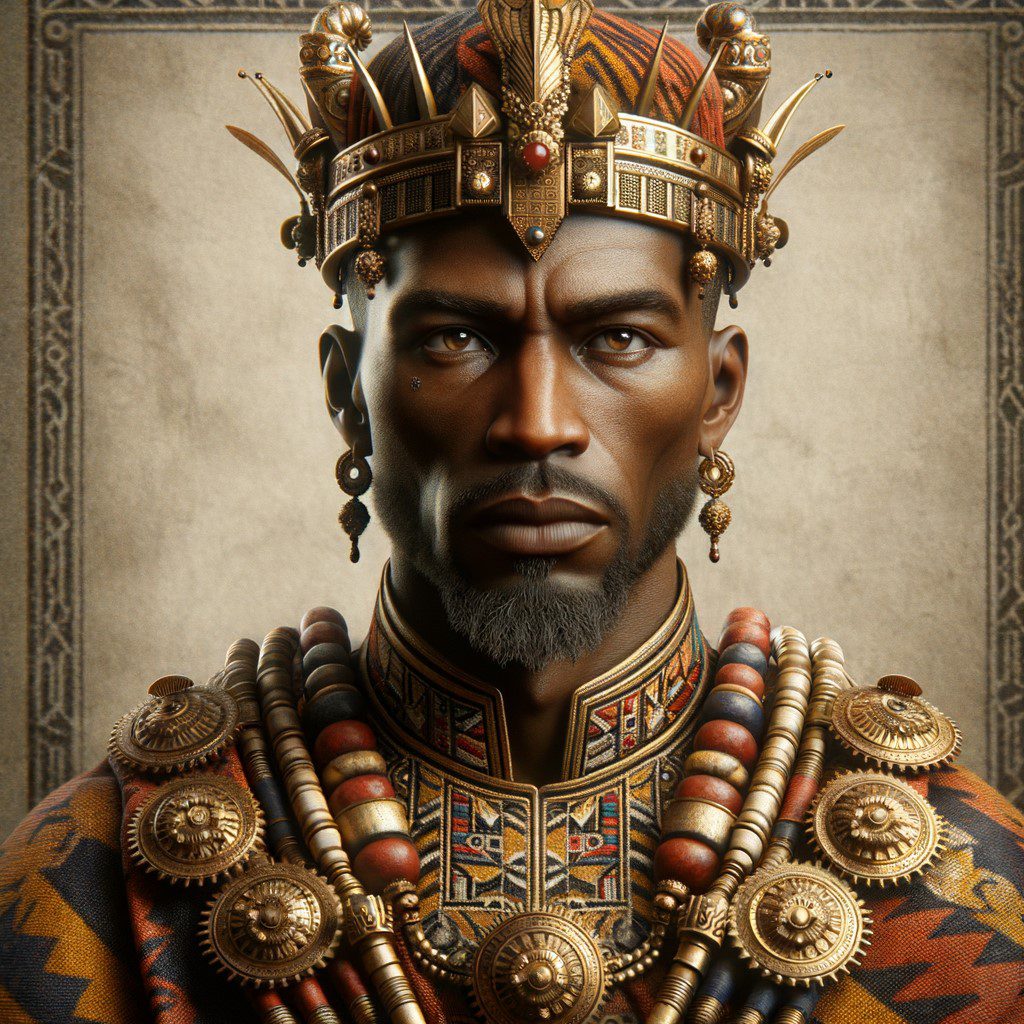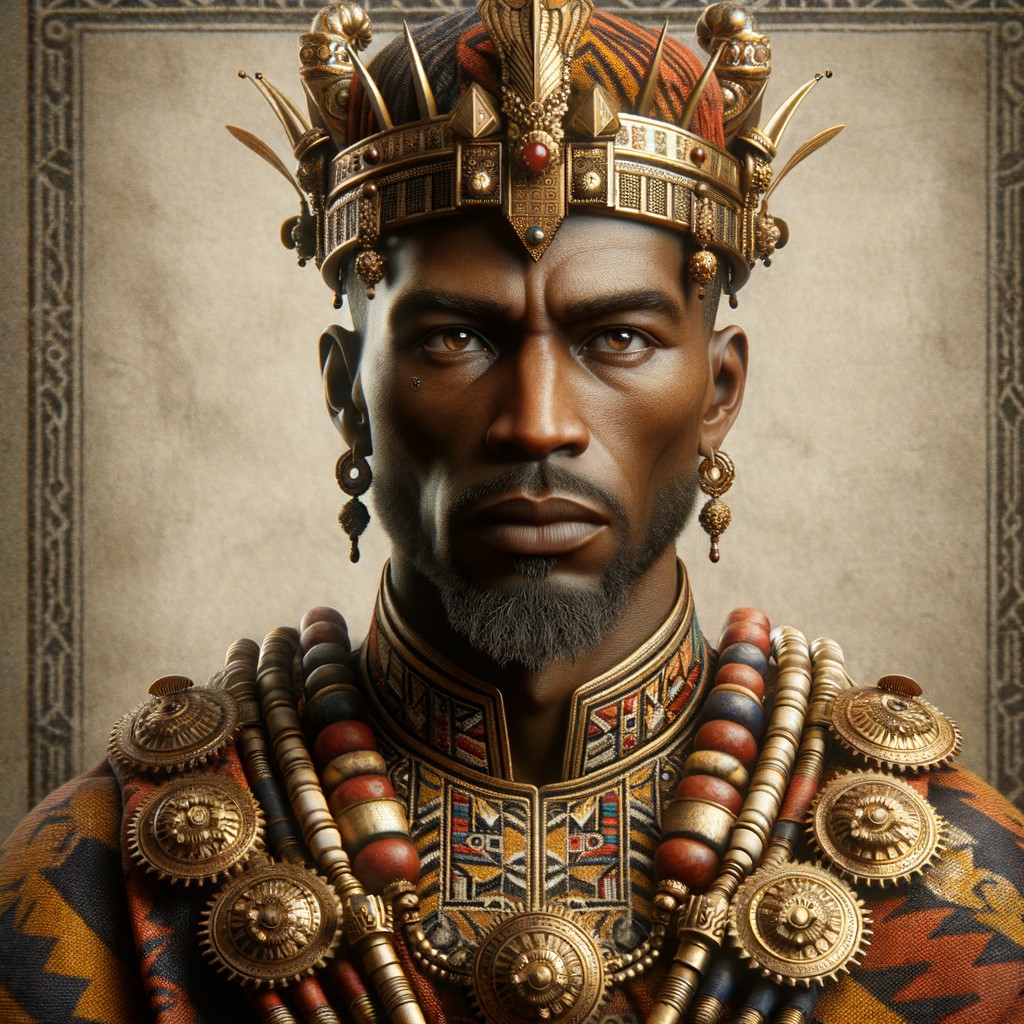Mansa Musa: The Wealthiest Primal King in History
Introduction To Mansa Musa
Mansa Musa, also known as Musa I of Mali, is celebrated as one of the wealthiest individuals in history and the ruler of the Mali Empire during the 14th century.
His reign, marked by extraordinary wealth, architectural achievements, and a significant impact on education and culture, left an enduring legacy that continues to be admired today.

Early Life
Mansa Musa, born Musa Keita, was the tenth Mansa, which translates to “sultan” or “king,” of the Mali Empire. While the exact date of his birth is not recorded, his reign began in 1312.
Musa inherited the throne after his predecessor, Abu-Bakr II, failed to return from a voyage to explore the Atlantic Ocean.
Mansa Musa was born around 1280 into a family of rulers. He was the grandnephew of Sundiata Keita, the founder of the Mali Empire.
Before ascending the throne, Musa served as a deputy to the emperor, overseeing important regions within the empire.
His rise to power came after the previous emperor, Abubakari II, embarked on an ambitious expedition to explore the Atlantic Ocean and never returned.

Reign as Emperor
Mansa Musa ascended the throne in 1312, during a time when the Mali Empire was already prosperous and powerful. His reign lasted until 1337, and he expanded the empire significantly, consolidating control over a vast region that included present-day Mali, Senegal, Gambia, Guinea, Niger, Nigeria, and Chad.
Wealth and Economic Impact
Mansa Musa’s wealth is often described as immeasurable and incomparable to any other historical figure.
The Mali Empire controlled significant trade routes and was rich in natural resources, especially gold and salt.
Musa’s wealth was largely derived from the gold mines of West Africa, which were among the richest in the world at the time.
The Gold of Mali:
Gold mining made Mansa Musa I of Mali (14th Century) the richest person in all history, according to a list of the world’s richest people of all time.
Today, companies controlled by the Rothschild family own the largest gold mines in Mali. The gold mines are located in the far west and south of Mali.
The real owners: AngloGold Ashanti, Randgold, and IAMgold companies. The 3 mines produced 233 tons of gold by 2003, which would be worth more than $14 billion at $1,900 per troy ounce, the value gold reached in 2011.
The Sadiola mine production figures from IAMGOLD
In Mali, there are three main companies that control the majority of the mining sector. These companies are AngloGold Ashanti, Randgold, and IAMgold.
The Sadiola and Morila mines of Mali produced 83 percent of all gold produced in Mali between 1999 and 2001. This amounts to hundreds of millions of dollars worth of gold.
Pilgrimage to Mecca
One of the most famous events during Mansa Musa’s reign was his pilgrimage (Hajj) to Mecca in 1324. This journey, spanning approximately 4,000 miles, showcased his immense wealth and brought him international fame.
Musa traveled with a caravan that included tens of thousands of soldiers, attendants, and subjects, along with a vast amount of gold.
During his pilgrimage, Musa generously distributed gold to the poor, built mosques, and traded extensively.
His generosity was so profound that it reportedly caused inflation in the regions he passed through, particularly in Cairo, where the value of gold decreased for several years.

Cultural and Educational Contributions
Mansa Musa was not only wealthy but also a patron of education, arts, and culture. He invested heavily in the construction of schools, libraries, and mosques.
The city of Timbuktu, under his rule, became a major center of learning and culture.
The University of Sankore in Timbuktu attracted scholars from all over the Islamic world, significantly contributing to the intellectual and cultural development of the Mali Empire.
Architectural Achievements
Musa commissioned the construction of several impressive structures, including the Djinguereber Mosque in Timbuktu, designed by the Andalusian architect Abu Ishaq al-Sahili.
These architectural projects not only enhanced the cultural landscape of the empire but also showcased its prosperity and sophistication.
Legacy
Mansa Musa’s reign left a lasting legacy on the Mali Empire and the world. His extraordinary wealth and the splendor of his pilgrimage brought global attention to West Africa.
The cultural and educational advancements he initiated had a profound and lasting impact on the region. The Mali Empire continued to thrive after his death, benefiting from the foundations he laid in business/trade, education, and architecture.
Conclusion
Mansa Musa’s extraordinary wealth, visionary leadership, and contributions to culture and education make him one of the most remarkable figures in history.
His reign epitomized the golden age of the Mali Empire, and his legacy continues to be celebrated as a symbol of African richness and intellectual achievement.
You can purchase the book about ‘Mansa Musa’ at Amazon by clicking on link: Mansa Musa: A Captivating Guide to the Emperor of the Islamic Mali Empire in West Africa and How He Developed Timbuktu into a Major Center for Trade.
Primal Mogul
‘As an Amazon Associate, We earn from qualifying purchases‘








